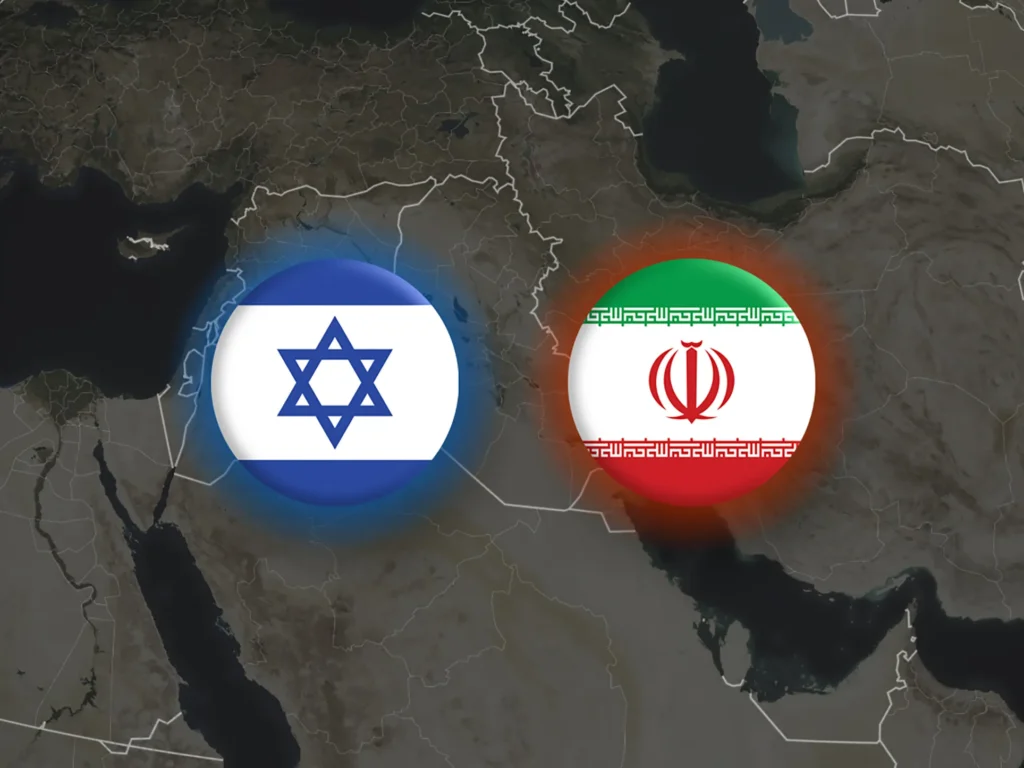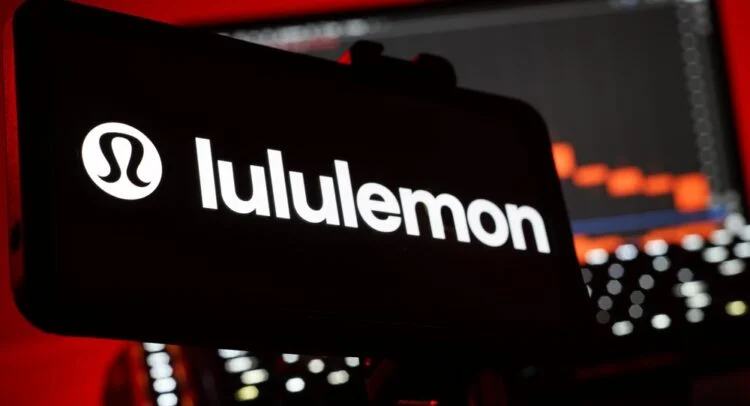
The 2025 Iran-Israel war shakes markets and the U.S. economy.
At GLHR Investing, we’re dissecting the escalating 2025 Iran-Israel conflict, a pivotal geopolitical crisis shaking global markets. With the S&P 500 (SPY) down 4.17% year-to-date at $513.88 as of May 23, 2025, and surging ~14.8–16.7% in June to ~6,000 points, the war—sparked by Israel’s preemptive strikes and intensified by U.S. bombing of Iranian nuclear sites—has profound implications. Who started this conflict, why did the U.S. intervene, and how is it impacting the U.S. economy? Amid Trump’s tariffs, 3.2% CPI inflation, and a 60% recession risk, here’s a comprehensive analysis of the conflict’s origins, U.S. actions, and economic consequences, with strategies for investors to navigate the fallout.
- Conflict Overview: Iran vs. Israel in 2025:
- Timeline:
- June 13, 2025: Israel launched a surprise attack on Iranian nuclear and military targets, initiating the conflict, per web data.
- June 15–20: Iran retaliated with over 400 ballistic missiles and drones, targeting Israeli cities (e.g., Haifa, Beersheba), killing civilians and wounding dozens, per web data.
- June 21: U.S. joined Israel, bombing Iran’s Fordow, Natanz, and Isfahan nuclear sites in “Operation Midnight Hammer,” using B-2 stealth bombers and bunker-buster bombs, per web data.
- June 22: Iran launched missiles at Israel, wounding 80+, with threats to close the Strait of Hormuz, per web data.
- Scale:
- Israel’s initial strikes killed 21 of 22 senior Iranian military figures and 10 of 12 nuclear scientists, severely weakening Iran’s capabilities, per web data.
- Iran’s missile barrages reduced from 200 on June 13 to 15–20 daily by June 19, indicating depleted capacity, per web data.
- U.S. strikes involved 125 aircraft, dropping 14 GBU-57 bunker-buster bombs on Fordow, with no reported Iranian resistance, per web data.
- Casualties:
- Iran: Hundreds of civilian and military deaths, including a 13-year-old girl in Tehran, per web data.
- Israel: Over 80 wounded, with 76 injured in a Beersheba hospital attack on June 19, per web data.
- Global Reaction:
- Condemnations from Iran, Russia, Cuba, and Hezbollah; support from Israeli officials (e.g., Netanyahu, Gideon Saar); mixed U.S. sentiment (e.g., Rep. Marjorie Taylor Greene opposed), per web data.
- UN and IAEA expressed alarm, noting no radiation leaks but warning of escalation risks, per web data.
- Timeline:
- Who Started the Conflict and Why?:
- Initiator: Israel launched the first strikes on June 13, 2025, targeting Iran’s nuclear facilities (e.g., Natanz, Isfahan, Arak) and military sites, per web data.
- Reasons:
- Nuclear Threat Perception: Israel viewed Iran’s nuclear program as an existential threat, claiming Iran had enough enriched uranium (60% purity) for nine nuclear bombs, per web data. Israeli officials, including Prime Minister Benjamin Netanyahu, argued Iran was nearing a “point of no return” for weaponization, despite Iran’s peaceful intent claims, per web data.
- Strategic Opportunity: Israel capitalized on weakened Iranian proxies (e.g., Hezbollah, Hamas) post-2023 Gaza and Lebanon conflicts, aiming to dismantle Iran’s nuclear and military capabilities, per web data.
- Preemptive Strike: Israel’s military superiority, demonstrated by killing key Iranian commanders (e.g., Hossein Salami) and nuclear scientists, enabled a surprise attack to degrade Iran’s defenses, per web data.
- U.S. Coordination: Israel likely anticipated U.S. support, with full coordination reported for the June 21 strikes, per web data.
- Iran’s Perspective:
- Iran denied nuclear weapon ambitions, insisting its program was for civilian purposes, a stance supported by IAEA chief Rafael Grossi, who rejected claims of imminent weaponization, per web data.
- Iran viewed Israel’s attacks as unprovoked, with officials like Foreign Minister Abbas Araghchi calling them a “barbaric violation” of international law, per web data.
- Tehran’s retaliatory missile strikes were framed as self-defense, targeting Israeli military sites, though civilian casualties (e.g., Beersheba hospital) drew criticism, per web data.
- Critical Assessment:
- Israel’s preemptive strike aligns with its historical strategy of neutralizing perceived threats (e.g., Iraq’s Osirak reactor in 1981), but lacked evidence of an imminent Iranian attack, per web data.
- Iran’s missile barrages, while retaliatory, escalated civilian harm, undermining its defensive narrative, per web data.
- The absence of a prior Iranian attack supports claims that Israel initiated the conflict, though Iran’s nuclear advancements and proxy support (e.g., Hamas) fueled Israeli fears, per web data.
- Why Did the U.S. Drop Bombs on Iran?:
- Decision Context:
- On June 21, 2025, the U.S. launched “Operation Midnight Hammer,” striking Iran’s Fordow, Natanz, and Isfahan nuclear sites with B-2 bombers and 14 GBU-57 bunker-buster bombs, per web data.
- President Trump announced the strikes, claiming they “obliterated” Iran’s nuclear enrichment capacity, though damage assessments were inconclusive, per web data.
- Reasons for U.S. Intervention:
- Support for Israel: Trump’s decision followed Israel’s June 13 attacks, with Netanyahu praising Trump’s “bold decision” to join the campaign, per web data. Israel’s inability to destroy Fordow’s deeply buried facility necessitated U.S. bunker-buster bombs, per web data.
- Nuclear Threat Concerns: Trump and Israeli leaders argued Iran was close to developing nuclear weapons, despite U.S. intelligence indicating no active pursuit, per web data. Trump’s long-standing opposition to Iran’s nuclear program, reiterated since 2018 JCPOA withdrawal, drove the strikes, per web data.
- Strategic Escalation: After stalled nuclear talks (canceled post-Israel’s strikes), Trump aimed to force Iran to negotiate or face further attacks, per web data. His June 19 statement set a two-week deadline for diplomacy, signaling intent to act, per web data.
- Domestic Politics: Trump’s intervention aligned with hawkish Republican voices (e.g., Sen. Lindsey Graham), though it split the MAGA base, with figures like Rep. Marjorie Taylor Greene opposing escalation, per web data.
- U.S. Objectives:
- Disrupt Iran’s nuclear program, targeting fortified sites like Fordow, which Iran evacuated prior to strikes, per web data.
- Deter Iranian retaliation, with Trump warning of “far greater” strikes, though regime change was disavowed by Defense Secretary Pete Hegseth, per web data.
- Maintain regional influence, countering Iran’s proxy network (e.g., Hezbollah, Hamas), per web data.
- Critical Assessment:
- The U.S. strikes lacked evidence of an immediate Iranian threat, contradicting IAEA assessments, per web data.
- Trump’s intervention escalated a conflict Israel initiated, risking broader regional war without clear strategic gains, per analysts like Trita Parsi, who warned of nuclear proliferation, per web data.
- The operation’s success is debated, as Iran’s nuclear expertise and uranium stockpiles remain intact, per web data.
- Decision Context:
- Economic Impacts on the U.S.:
- Market Reactions:
- Stock Market: SPY surged ~14.8–16.7% in June to 6,000 points, driven by trade deal hopes and a jobs report (139,000 added), but post-strike volatility (June 21–22) saw a ~0.5% dip on June 22, per web data. Defense stocks (e.g., Lockheed Martin, RTX) rallied ~5–10%, while tech (e.g., AAPL -19%) and consumer discretionary (TSLA -20%) lagged, per prior analyses.
- Oil Prices: Brent crude jumped ~10% to ~$80/barrel post-strikes, with fears of Iran closing the Strait of Hormuz (20% of global oil, 5.4M barrels/day for China), per web data. A closure could spike prices to $100–$120/barrel, per web data.
- Inflation Pressures:
- U.S. CPI at 3.2% in June, projected to hit 4–4.5% by year-end, could rise further (5–6%) if oil prices escalate, increasing fuel and transport costs, per web data.
- Tariff-driven cost hikes ($1,200/household) and steel tariffs (19% construction cost increase) compound inflation risks, per web data.
- Supply Chain Disruptions:
- Strait of Hormuz closure risks $12B in trade disruptions, impacting Asian economies (e.g., China, South Korea) reliant on 20M barrels/day, per web data. U.S. tech and consumer goods sectors face 5–10% cost increases from tariff-related chip shortages, per web data.
- Fiscal and Defense Spending:
- Operation Midnight Hammer’s cost (125 aircraft, 14 MOPs) is estimated at $1–2B, adding to OBBBA deficits ($3.2–$4.1T), pushing 10-year yields to 4.46%, per web data.
- Defense contractors (e.g., Boeing, RTX) benefit, with potential $10B+ in new contracts, per web data.
- Recession Risk:
- A 60% U.S. recession probability could worsen with oil price spikes, reducing consumer spending (down 13%) and GDP growth (Q2 at 1.5–1.9%), per web data.
- Higher yields (4.5–5%) from deficits pressure growth stocks, per web data.
- Global Trade:
- U.S. allies (e.g., South Korea, Japan) face economic strain from oil disruptions, with South Korea convening security talks post-strikes, per web data.
- China’s reliance on Strait oil (5.4M barrels/day) risks supply chain shocks, impacting U.S.-China trade ($1.4T), per web data.
- Critical Assessment:
- The U.S. economy faces stagflation risks (high inflation, low growth) if oil prices soar, per web data.
- Defense spending boosts select sectors, but broader market volatility and consumer pressures outweigh short-term gains, per web data.
- Premature claims of “obliterated” nuclear sites (e.g., Trump’s) may overstate impact, prolonging conflict and economic uncertainty, per web data.
- Market Reactions:
- Investor Strategies:
- Opportunities:
- Defense Stocks: Lockheed Martin (LMT, P/E 18, ~3% yield) and Raytheon Technologies (RTX, P/E 20, ~2% yield) for tariff and conflict-driven contracts, per web data.
- Oil & Energy: ExxonMobil (XOM, P/E 13, 3.3% yield) and Chevron (CVX, P/E 14, 4.2% yield) for oil price spikes, per web data.
- Defensive Sectors: Healthcare (JNJ, P/E 15, 3% yield) and consumer staples (PG, P/E 24, 2.4% yield) for recession resilience, per prior analyses.
- Portfolio Allocation:
- Allocate 10–15% to defense (LMT, RTX) and energy (XOM, CVX), 40% to defensives (JNJ, PG), and 30% to bonds (Treasuries) for stability, per prior analyses.
- Hedge with 3–5% in gold (GLD, +3%) or utilities (XLU, +1%) to counter inflation and volatility, per web data.
- ETFs for Diversification:
- iShares U.S. Aerospace & Defense ETF (ITA): ~$140, 1% yield, up ~8% YTD, per web data. Buy near $135, target $150.
- Energy Select Sector SPDR Fund (XLE): ~$90, 3% yield, up ~10% YTD, per web data. Buy near $85, target $100.
- Timing:
- Buy on SPY dips near $5800 or sector pullbacks (e.g., XOM <$110), per web data.
- Dollar-cost average ($500–$1,000/month) to manage VIX (~20–25), per web data.
- Key Catalysts to Monitor:
- July 9 Tariff Deadline: Reinstatement of 125% China tariffs could exacerbate supply chain costs, per web data.
- Iranian Retaliation: Strait of Hormuz closure or attacks on U.S. bases could spike oil prices, per web data.
- June 17–18 FOMC Meeting: Rate cut signals (20% chance in July) could ease borrowing costs, per web data.
- Oil Market: Brent crude ($80/barrel) and Strait disruptions impact inflation, per web data.
- Risks:
- Oil Price Surge: $100–$120/barrel could drive inflation to 5–6%, eroding consumer spending, per web data.
- Recession Risk: 60% probability could deepen with trade disruptions, per web data.
- Market Volatility: Geopolitical escalation (e.g., Iran targeting U.S. assets) risks SPY drops of 5–10%, per web data.
- Nuclear Proliferation: Iran’s potential weaponization in 5–10 years could destabilize markets, per web data.
- Opportunities:
- Conclusion: Navigating the Conflict’s Fallout:
- Israel initiated the 2025 Iran-Israel war on June 13 with preemptive strikes to neutralize Iran’s nuclear threat, escalating with U.S. bombing of Fordow, Natanz, and Isfahan on June 21 to curb Tehran’s capabilities. While Israel and Trump cited imminent nuclear risks, Iran’s peaceful intent and lack of prior aggression suggest a strategic overreach, risking regional instability. The U.S. economy faces stagflation (3.2% CPI, oil spikes) and trade disruptions (Strait of Hormuz), but defense and energy sectors offer opportunities. Investors should buy defensive (JNJ) and energy stocks (XOM), diversify with ETFs (ITA, XLE), and hedge against volatility to weather the economic fallout.
- Why It Matters: The Iran-Israel conflict, intensified by U.S. strikes, threatens global markets with oil shocks and inflation, with SPY down 15.6% YTD but up ~14.8% in June. Amid Trump’s tariffs and a 60% recession risk, picks like ExxonMobil and Lockheed Martin balance growth and stability. GLHR Investing guides you through this geopolitical storm, building a resilient portfolio in 2025’s uncertain economy.
Invest smart with GLHR Investing—navigate the war, secure your wealth!
Disclaimer: GLHR Investing is not a financial adviser; please consult one.








